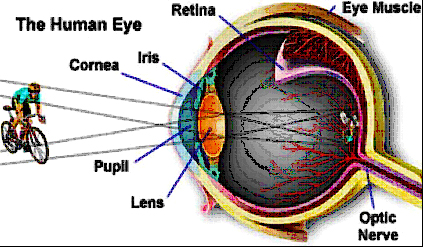|
In the eye the light stimulates the
retinal cones, receptor cells used to turn incoming photons
(packages of light energy) into a neural signal for
transmission to the brain. In the human eye we find three
distinct kinds of cone receptor cells labelled beta, gamma and
rho cells as well as so-called rod receptors which primarily
deal with intensity information rather than colour.
|

|